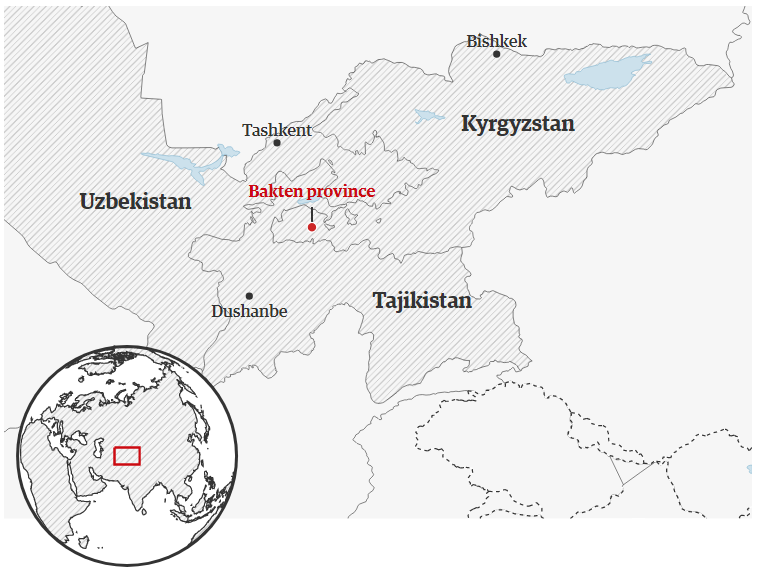Kyrgyzstan-Tajikistan Conflict | 23 Sep 2022
For Prelims: Kyrgyzstan-Tajikistan Conflict, Central Asia, Shanghai Cooperation Organization (SCO), International North South Transport Corridor (INSTC), UPSC, IAS, Previous Year Question.
For Mains: Significance of India’s Role in Central Asia.
Why in News?
Recently, nearly 100 people have been killed and scores injured in violent border clashes between Kyrgyzstan and Tajikistan.
What Led to the Clash between the Two Countries?
- Historical Legacy:
- The current clashes are replaying old pre- and post-Soviet era legacies.
- The borders of the two republics were demarcated under Joseph Stalin's leadership.
- Common Rights over Natural Resources: Historically, the Kyrgyz and Tajik populations enjoyed common rights over natural resources.
- The creation of the Soviet Union saw the large-scale redistribution of livestock to collective and state farms, which upset the existing status quo.
- Present Tussle:
- Recent incidents saw groups from either side planting trees in disputed areas and engaging in a physical confrontation using agricultural equipment as weapons.
- Currently, Ferghana Valley continues to be a site of struggle and frequent violent outbursts, with the location consisting primarily of Tajiks, Kyrgyz, and Uzbeks, who have historically shared common sociological specificities, economic activities, and religious practices.
- Both countries share multiple water channels with undulating trajectories and flow, which upset equitable access to water on both sides. As a result, small-scale conflicts occur practically every year during the crucial irrigation period.
- Kyrgyzstan and Tajikistan share 971 kilometers of border territory of which about 471 kilometers remain disputable.
- Leaders of both countries have contributed to the continuation of the conflict through the imagination of a particular type of development project which resulted in the large-scale displacement of nomadic communities, hoping to stabilise the internal dynamics of their respective countries and legitimise their power.
How are India-Tajikistan Relations?
- Cooperation in International Forums:
- In 2020, Tajikistan extended support for India’s candidature for a non-permanent seat in United Nation Security Council for the term 2021-22.
- Tajikistan strongly supported Shanghai Cooperation Organisation (SCO) Member status for India.
- India also supported Tajikistan’s candidature to United Nations’ Economic and Social Council (ECOSOC) and accession to WTO in March 2013.
- Development & Aid Partnership:
- Development Assistance:
- With a grant of USD 0.6 million, an Information and Technology Centre (Bedil Centre) was commissioned in 2006.
- The project ran for a full hardware cycle of 6 years and trained almost all first-generation IT experts in the government sector in Tajikistan.
- A project for setting up computer labs in 37 schools in Tajikistan was completed and delivered in August 2016.
- With a grant of USD 0.6 million, an Information and Technology Centre (Bedil Centre) was commissioned in 2006.
- Humanitarian Assistance:
- In June 2009, USD 200,000 cash assistance was given by India to overcome damage caused by floods in Tajikistan.
- After the outbreak of Polio in southwest Tajikistan, India provided 2 million doses of oral polio vaccine through UNICEF in November 2010.
- Development Assistance:
- Human Capacity Building:
- Since the establishment of the Indian embassy in Dushanbe in 1994, Tajikistan has been a beneficiary of the Indian Technical & Economic Cooperation Programme (ITEC).
- In 2019, under India-Central Asia Dialogue Process, some Tajik diplomats were trained at Foreign Service Institute, Delhi.
- Trade & Economic Relation:
- Indian exports to Tajikistan mainly consist of pharmaceuticals, medical preparations, cane or beet sugar, tea, handicraft and machinery.
- Indian pharmaceutical products occupy approximately 25% of Tajik market.
- Indian exports to Tajikistan mainly consist of pharmaceuticals, medical preparations, cane or beet sugar, tea, handicraft and machinery.
- Cultural & People-to-People Relation:
- Deep rooted historical and cultural linkages have helped expand and widen the relationship to a new level.
- Cooperation between the two countries encompasses all aspects of human endeavour with special focus on military and defence ties.
- Swami Vivekananda Cultural Centre in Dushanbe offers courses in Kathak & Tabla through teachers deployed by Indian Council for Cultural Relations from India. The centre also offers Sanskrit and Hindi language classes.
- In 2020 ‘My Life My Yoga’ video blogging competition saw participation from Tajikistan yoga enthusiasts.
- Deep rooted historical and cultural linkages have helped expand and widen the relationship to a new level.
- Strategic:
- India has an airbase at a place called Ayni, about thirty kilometres from Dushanbe. Over the years, it developed into an Indian Air Force (IAF) base known as Gissar Military Aerodrome (GMA).
Way Forward
- The path to resolution of the conflict will require warring groups to agree upon a common map.
- There is a need for the international community to make efforts to solve the dispute by involving elders in the communities, as historically, elders have been used to resolve conflicts.
UPSC Civil Services Examination Previous Year Question (PYQ)
Mains
Q. Critically examine the aims and objectives of SCO. What importance does it hold for India? (2021)

